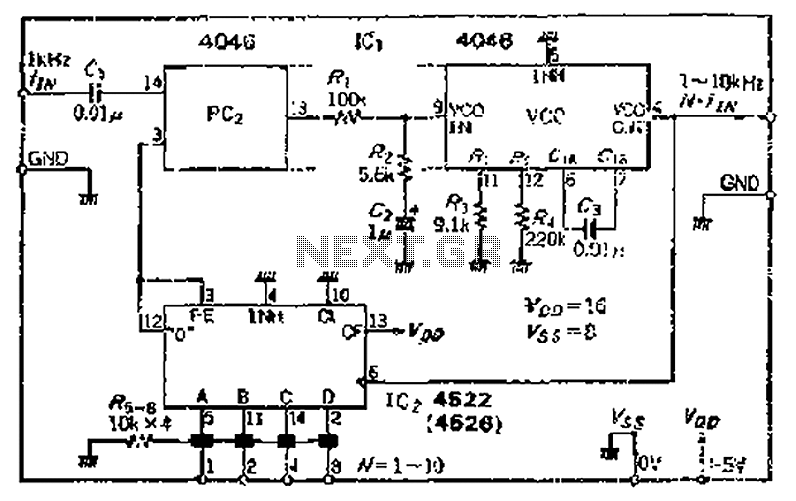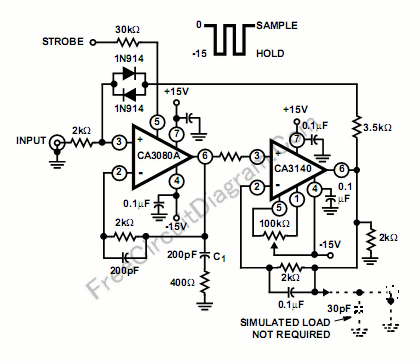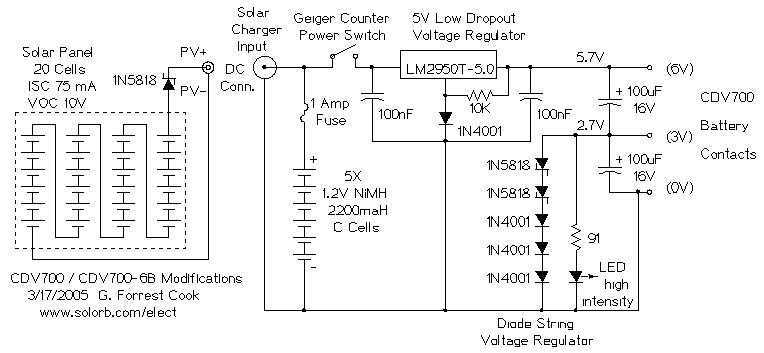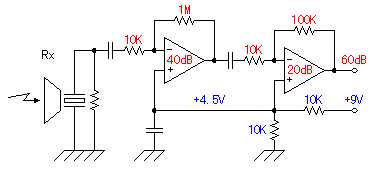
50 MHz range frequency counter using ATtiny45 microcontroller

A wide range frequency meter is a useful tool for an electronics lab. This project describes a frequency meter based on the AT90S231 microcontroller that can measure input frequencies up to 50 MHz. The measured frequency is displayed on six-digit multiplexed seven-segment displays. It uses two external high-speed 8-bit counters (74HC590) in cascade to count the incoming pulses. Depending upon the input frequency, the counting interval for the external counter circuit is changed by the microcontroller to achieve better accuracy. The firmware for the AT90S231 is provided in C.
The frequency meter project utilizes the AT90S231 microcontroller, which serves as the core processing unit. This microcontroller is capable of handling the measurement and display of frequencies up to 50 MHz, making it suitable for a wide variety of applications in electronics labs. The frequency measurement is accomplished through the use of two 74HC590 high-speed 8-bit counters connected in a cascading configuration. This arrangement allows for precise counting of incoming pulses, which correspond to the frequency of the input signal.
The multiplexed seven-segment display is employed to provide a clear and readable output of the measured frequency. The six-digit display allows for a wide range of frequency values to be represented, ensuring that the user can easily interpret the results. The multiplexing technique is crucial as it reduces the number of required microcontroller pins while still allowing for the display of multiple digits.
To enhance measurement accuracy, the microcontroller dynamically adjusts the counting interval based on the input frequency. This adaptability ensures that the frequency meter can accurately capture high-frequency signals without missing pulses, which is essential for reliable operation. The firmware, written in the C programming language, controls the entire operation of the frequency meter, including the counting process and the display of results.
Overall, this frequency meter design provides a robust solution for measuring high-frequency signals with precision and clarity, making it an invaluable tool for electronics experimentation and development.A wide range frequency meter is an useful tool for an electronics lab. This projects describes a frequency meter based on AT90S231 microcontroller that can measure input frequencies up to 50 MHz. The measured frequency is displayed on 6 digit multiplexed seven segment displays. It uses two external high-speed 8-bit counters (74HC590) in cascade to count the incoming pulses. Depending upon the input frequency, the counting interval for the external counter circuit is changed by the microcontroller for getting better accuracy. The firmware for AT90S231 is provided in C. 🔗 External reference
The frequency meter project utilizes the AT90S231 microcontroller, which serves as the core processing unit. This microcontroller is capable of handling the measurement and display of frequencies up to 50 MHz, making it suitable for a wide variety of applications in electronics labs. The frequency measurement is accomplished through the use of two 74HC590 high-speed 8-bit counters connected in a cascading configuration. This arrangement allows for precise counting of incoming pulses, which correspond to the frequency of the input signal.
The multiplexed seven-segment display is employed to provide a clear and readable output of the measured frequency. The six-digit display allows for a wide range of frequency values to be represented, ensuring that the user can easily interpret the results. The multiplexing technique is crucial as it reduces the number of required microcontroller pins while still allowing for the display of multiple digits.
To enhance measurement accuracy, the microcontroller dynamically adjusts the counting interval based on the input frequency. This adaptability ensures that the frequency meter can accurately capture high-frequency signals without missing pulses, which is essential for reliable operation. The firmware, written in the C programming language, controls the entire operation of the frequency meter, including the counting process and the display of results.
Overall, this frequency meter design provides a robust solution for measuring high-frequency signals with precision and clarity, making it an invaluable tool for electronics experimentation and development.A wide range frequency meter is an useful tool for an electronics lab. This projects describes a frequency meter based on AT90S231 microcontroller that can measure input frequencies up to 50 MHz. The measured frequency is displayed on 6 digit multiplexed seven segment displays. It uses two external high-speed 8-bit counters (74HC590) in cascade to count the incoming pulses. Depending upon the input frequency, the counting interval for the external counter circuit is changed by the microcontroller for getting better accuracy. The firmware for AT90S231 is provided in C. 🔗 External reference
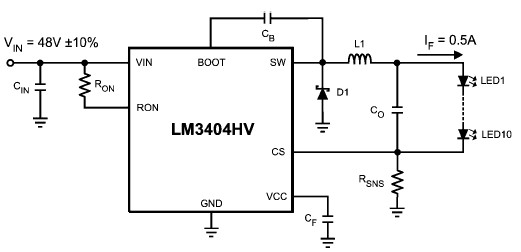
%2Busing%2Bop%2Bamp%2B741%2Bic%2B.png)
